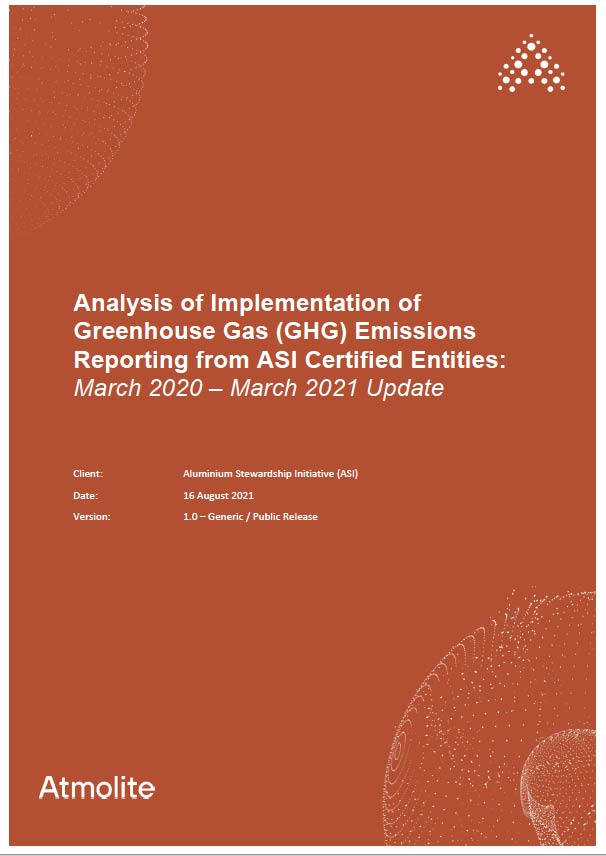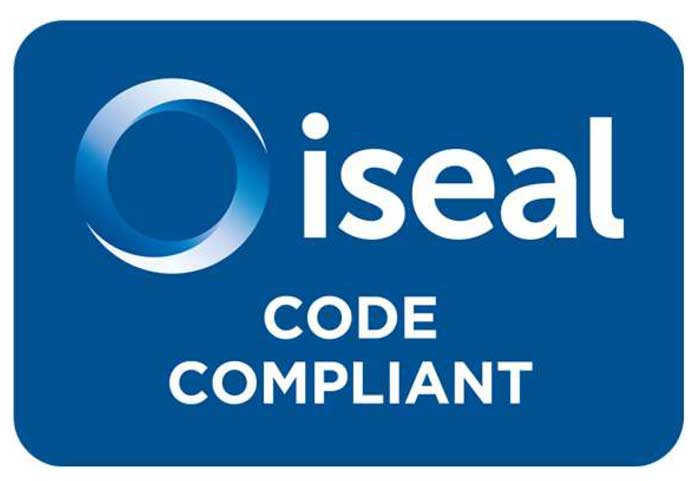ASI’s position and direction on a 1.5°C pathway aligned aluminium sector
Find out how the ASI Standards Revision is addressing the challenge of climate change mitigation and adaptation in the sector.
29 October 2021
Principle 5 in the ASI Performance Standard addresses GHG emissions and, through the Standards Revision process, is referencing a 1.5°C aligned scenario for the aluminium sector. Entities will be expected to develop emissions reduction pathways and plans, including targets, in accordance with such a sectoral slope.
Around 60% of the aluminium sector’s GHG emissions are from the production of electricity consumed during the aluminium smelting process. Decarbonisation will require all aluminium smelters to shift down the current emissions curve, particularly those currently using carbon-intensive sources of power. ASI aims to incentivise this by providing Certification pathways for all smelters on the emissions curve, whilst ensuring clear, significant and time-bound emission reductions are demonstrated. Through the Standards Revision, new threshold GHG emissions values for aluminium smelters are being proposed in the ASI Performance Standard, which include:
- A cradle to gate approach (from bauxite mining to primary metal production), which takes account of the major Scope 3 emissions upstream of the Smelter as well as its direct and energy-related footprint
- Pre-2020 smelters: approximately 11 t CO2e/t aluminium produced by 2030 (subject to change as the 1.5°C aligned pathway comes into focus)
- Post 2020 smelters: 11 t CO2e/t aluminium produced today (compared to a global average of around 16 t CO2e/t and a benchmark of around 4 t CO2e/t)
- All smelters (and indeed all Entities) need to align with a sectoral 1.5°C slope, which means that even smelters at 4 t CO2e/t today will need to reduce their footprint significantly by 2050, requiring deployment of novel technologies (in smelting, such as inert anodes but also in alumina refining), carbon capture utilisation and storage, switching to green hydrogen and sourcing of low carbon raw materials.
ASI is proposing not to allow use of compensation (offsets) for the smelter thresholds (11 t CO2e/t). However for 1.5°C aligned emission pathways (a requirement for all Entities, no matter which supply chain activities are within scope), compensation will play a role in driving emissions reductions, though not at the expense of mitigation activities. For all Entities, the use of offsets in emissions reductions plans must be limited to high quality, transparent and long term storage focused solutions and essentially phased out by 2050. Revisions to the ASI Performance Standard Guidance will look to align with the upcoming Science Based Targets initiative’s (SBTi) Net Zero Standard, due for release on 28th October. In 2022, ASI will also collaborate on a project to incorporate a 1.5°C aligned slope into the SBTi aluminium industry Sectoral Decarbonisation Approach (SDA), to support Entities who are looking to use an SDA for their target setting and to harmonise ASI and SBTi approaches.
Public disclosures of GHG data are a critical component of transparency and, following the ASI Standards Revision, will require independent verification. To further improve the quality and benchmarking of data disclosures, recommendations from a 2021 Atmolite report commissioned by ASI are also being incorporated into the Guidance.
The ASI Chain of Custody Standard provides a mechanism for asset-level performance claims to be connected to metal flow. Sharing of cradle to gate emissions data with customers as a supplement to CoC Documents will be included under criterion 9.3 as a voluntary metric, no matter where on the value chain the Entity operates.
More broadly, ASI’s Standards address a wide range of sustainability Principles. As Entities begin to decarbonise heavily, the use of such Standards will be important in ensuring that emissions reduction does not come at the expense of other critical ESG risks, giving responsible producers access to capital from financial institutions and securing a licence to operate from regulators and local communities.
ASI’s vision is to maximise the contribution of aluminium to a sustainable society – and this is only credibly achieved if the sector (ASI Entities and non-Entities) aligns itself with the latest climate science and societal expectations: a 1.5°C aligned future. ASI’s Certification program must therefore deliver assurance against Standards that truly drive change across the whole sector, not only mobilise a select few who can more easily effect change or rewarding those that start from a lower baseline. Differentiation and competition on specific performance metrics is still possible within the market, and is increasing being applied by companies, in particular through product carbon footprints. However, ASI does not aim to create a ‘low-carbon aluminium’ benchmark. Instead, we believe that a comprehensive and inclusive approach is better placed to achieve the sectoral transformation that is greatly needed.
Find out more about the ASI Standards Revision overseen by the multi-stakeholder Standards Committee. Mark your calendars for the final public consultation on the draft revised Standards, which is planned to kick-off in January 2022.
More on ASI and Climate Change
- Consult the description of ASI’s role regarding addressing GHG emissions
- Watch the 45 minutes on… GHG Emissions: increasing transparency, improving performance, delivering change and the evolving climate role of ASI
- Watch the 45 minutes on… ASI & CRU: Responsible aluminium production and supply, GHG emissions
SHARE THIS ARTICLE



